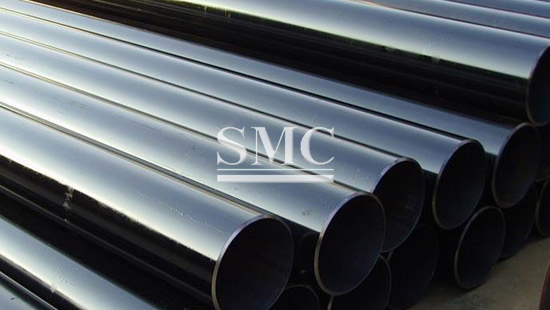Notice: Undefined index: sith_hide_share in /www/sites/alloy.wiki/index/wp-content/themes/likegoogle/single.php on line 32
Deprecated: get_settings is deprecated since version 2.1.0! Use get_option() instead. in /www/sites/alloy.wiki/index/wp-includes/functions.php on line 4862
Carbon steel pipes are divided into two types: hot rolled and cold rolled steel.
Hot-rolled carbon steel pipes are divided into general steel pipes, low and medium pressure boiler steel pipes, high pressure boiler steel pipes, alloy steel pipes, stainless steel pipes, petroleum cracking pipes, geological steel pipes and other steel pipes.
Cold-rolled carbon steel pipes are divided into general steel pipes, low and medium pressure boiler steel pipes, high pressure boiler steel pipes, alloy steel pipes, stainless steel pipes, petroleum cracking pipes, and other steel pipes, including carbon thin-walled steel pipes, alloy thin-walled steel pipes, and stainless steel thin-walled steel pipes. , shaped steel pipe. 5 mm, the wall thickness is less than 0.25 mm, and the cold rolling is more accurate than the hot rolling.
General carbon steel pipe: It is made of high-quality carbon steel such as 10, 20, 30, 35, 45, etc., low-alloy structural steel such as 16Mn, 5MnV, or alloy steel such as 40Cr, 30CrMnSi, 45Mn2, 40MnB, etc., which is hot rolled or cold rolled. Seamless pipes made of low carbon steel such as 10, 20 are mainly used for fluid conveying pipes. 45, 40Cr and other medium carbon steel seamless pipes are used to make mechanical parts, such as automotive, tractor parts. Generally use carbon steel pipe to ensure. Strength and flattening test Hot rolled steel pipes are delivered in a hot rolled state or heat treated state; cold rolling is delivered in a heat treated state.

Preparation
The raw material of the carbon steel pipe is a round tube blank, and the round tube embryo is cut by a cutting machine, processed into a blank having a length of about 1 m, and sent to a furnace for heating via a conveyor belt. The billet is fed into a furnace and heated to a temperature of approximately 1200 degrees Celsius. The fuel is hydrogen or acetylene. Furnace temperature control is a critical issue. After the round tube blank is released, it is subjected to a through-hole punching machine. The more common perforating machine is a conical roller punching machine. This perforating machine has high production efficiency, good product quality, large diameter of perforation and can wear a variety of steel types. After perforation, the round billet is successively rolled by three rolls, continuously rolled or extruded. After extrusion, the tube should be sizing. The sizing machine is rotated at a high speed by a conical drill bit into a steel core to form a steel pipe. The inner diameter of the steel pipe is determined by the outer diameter of the sizing machine drill bit. After the steel pipe has been sized, it enters the cooling tower and is cooled by water spray. After the steel pipe is cooled, it is straightened. After the steel pipe is straightened, it is sent to a metal flaw detector (or water pressure test) by a conveyor belt for internal flaw detection. If there are cracks inside the steel pipe, bubbles and other problems will be detected. After the quality inspection of steel pipes, strict manual selection is also required. After the quality inspection of the steel pipe, the paint is sprayed with the number, specification, production batch number, etc. It is hoisted into the warehouse by a crane.
Technical Parameter
The carbon steel pipe is formed by perforating a steel ingot or a solid tube blank, and then hot rolled, cold rolled or cold drawn. Carbon steel pipe plays an important role in China’s steel pipe industry. According to incomplete statistics, there are more than 240 carbon steel pipe production enterprises and more than 250 carbon steel pipe units in China, with an annual production capacity of more than 4.5 million tons. From the caliber, <φ76, accounting for 35%, <φ159-650, accounting for 25%. In terms of varieties, the general purpose pipe is 1.9 million tons, accounting for 54%; the petroleum steel pipe is 760,000 tons, accounting for 5.7%; the hydraulic prop, the precision pipe is 150,000 tons, accounting for 4.3% of the stainless pipe bearing pipe, and the automobile pipe is 50,000 tons. Accounted for 1.4%.
Guest contributors are welcome at the Alloy Wiki.It is a weekly wiki and guide on alloy information and processing technology, while also about the vast array of opportunities that are present in manufacturing. Our team of writers consists of a Machining Material Supplier / Machinist / Tool and Die Maker, a Biomedical Engineer / Product Development Engineer, a Job Development Coordinator / Adjunct Professor, and a President and CEO of a manufacturing facility.
Link to this article:Carbon Steel Pipe Properties
Reprint Statement: If there are no special instructions, all articles on this site are original. Please indicate the source for reprinting:Alloy Wiki,thanks!^^


